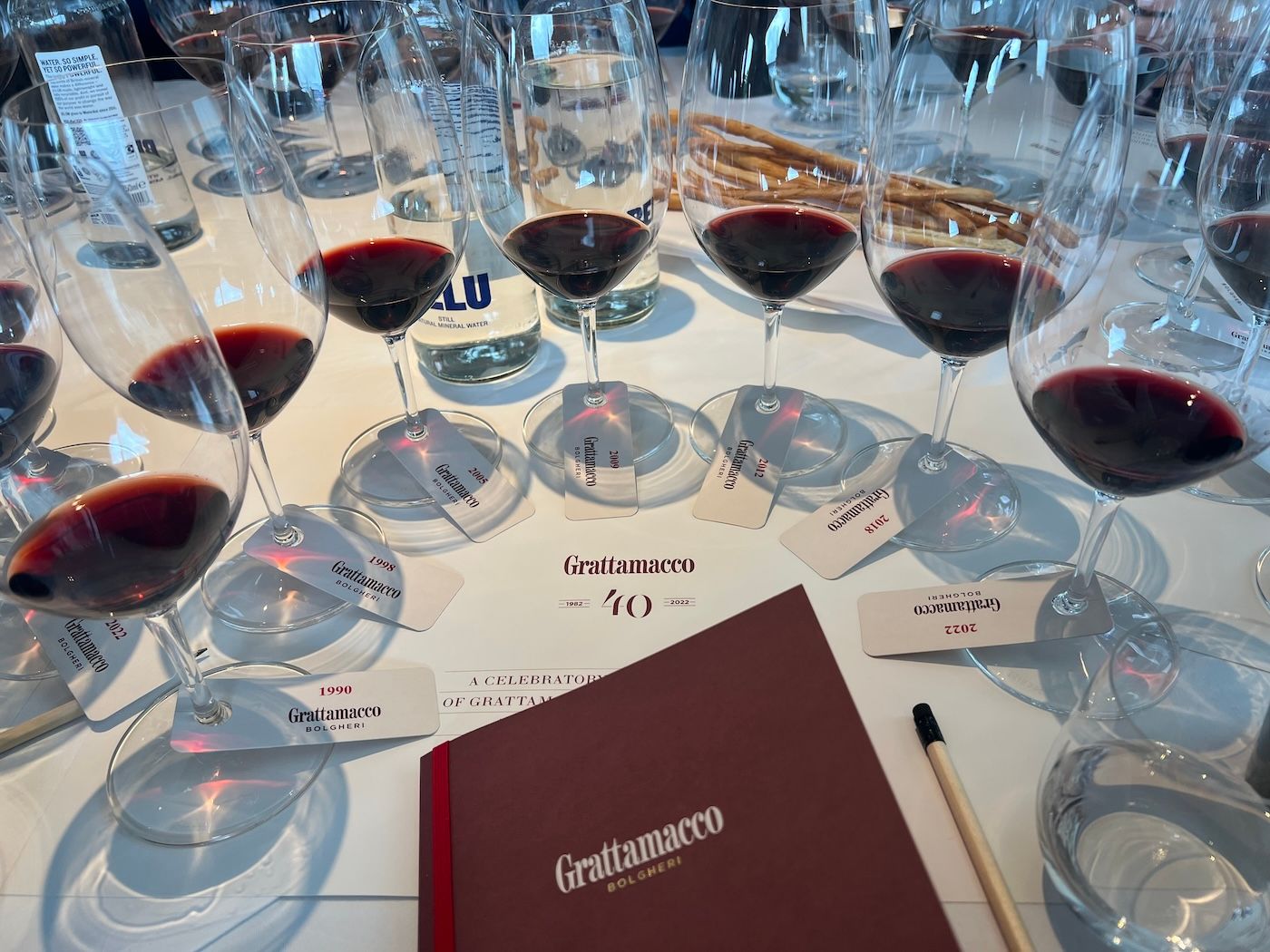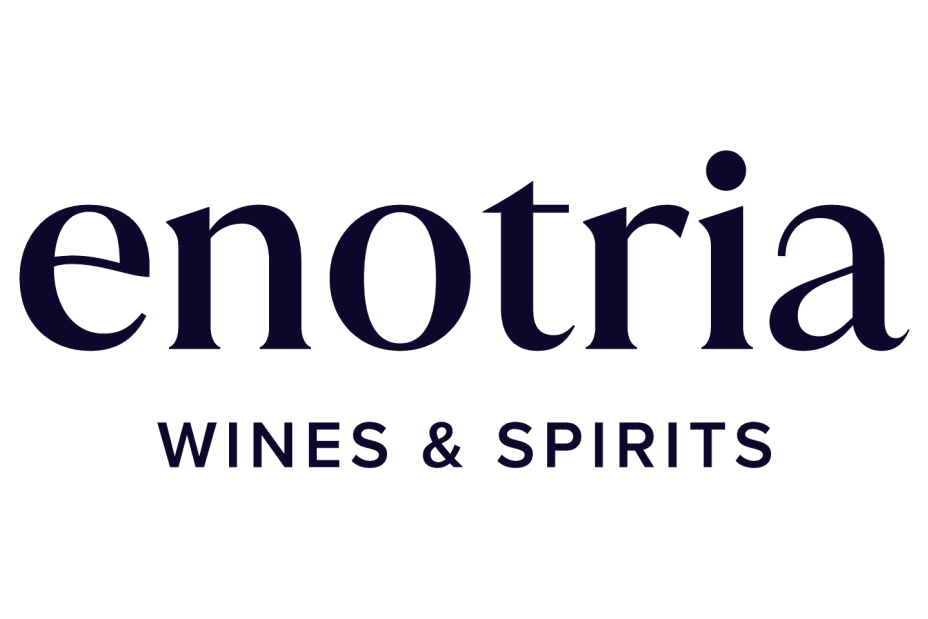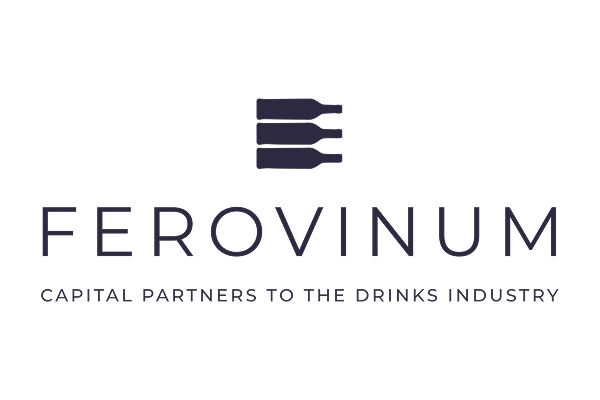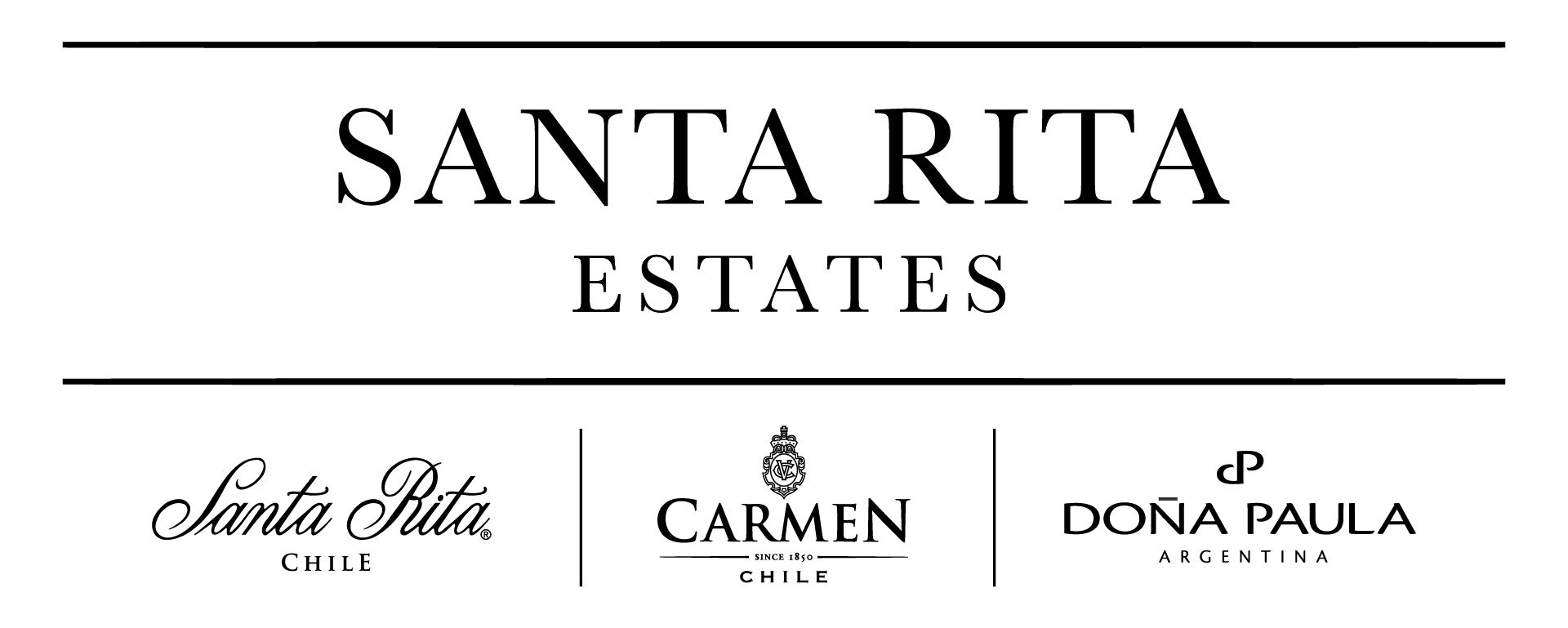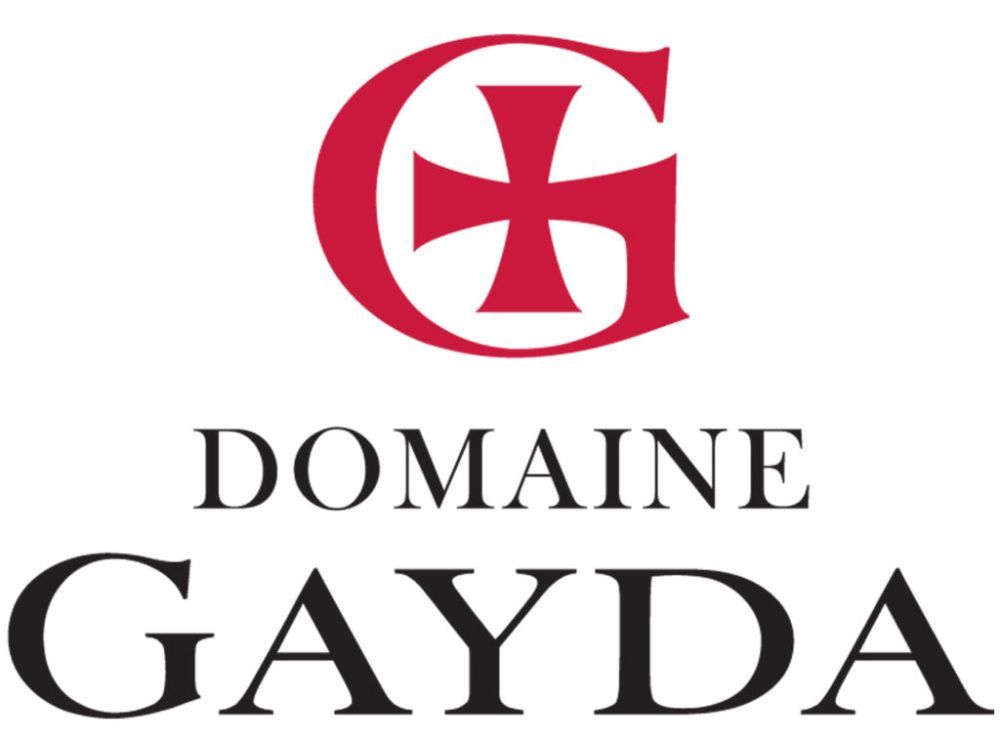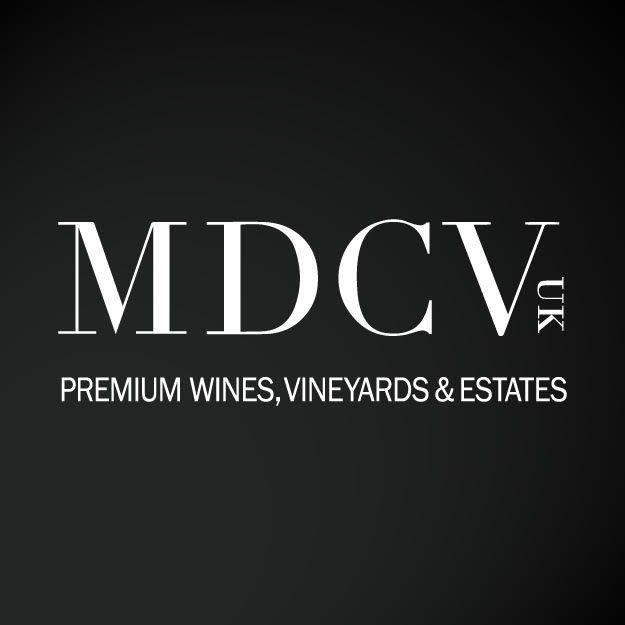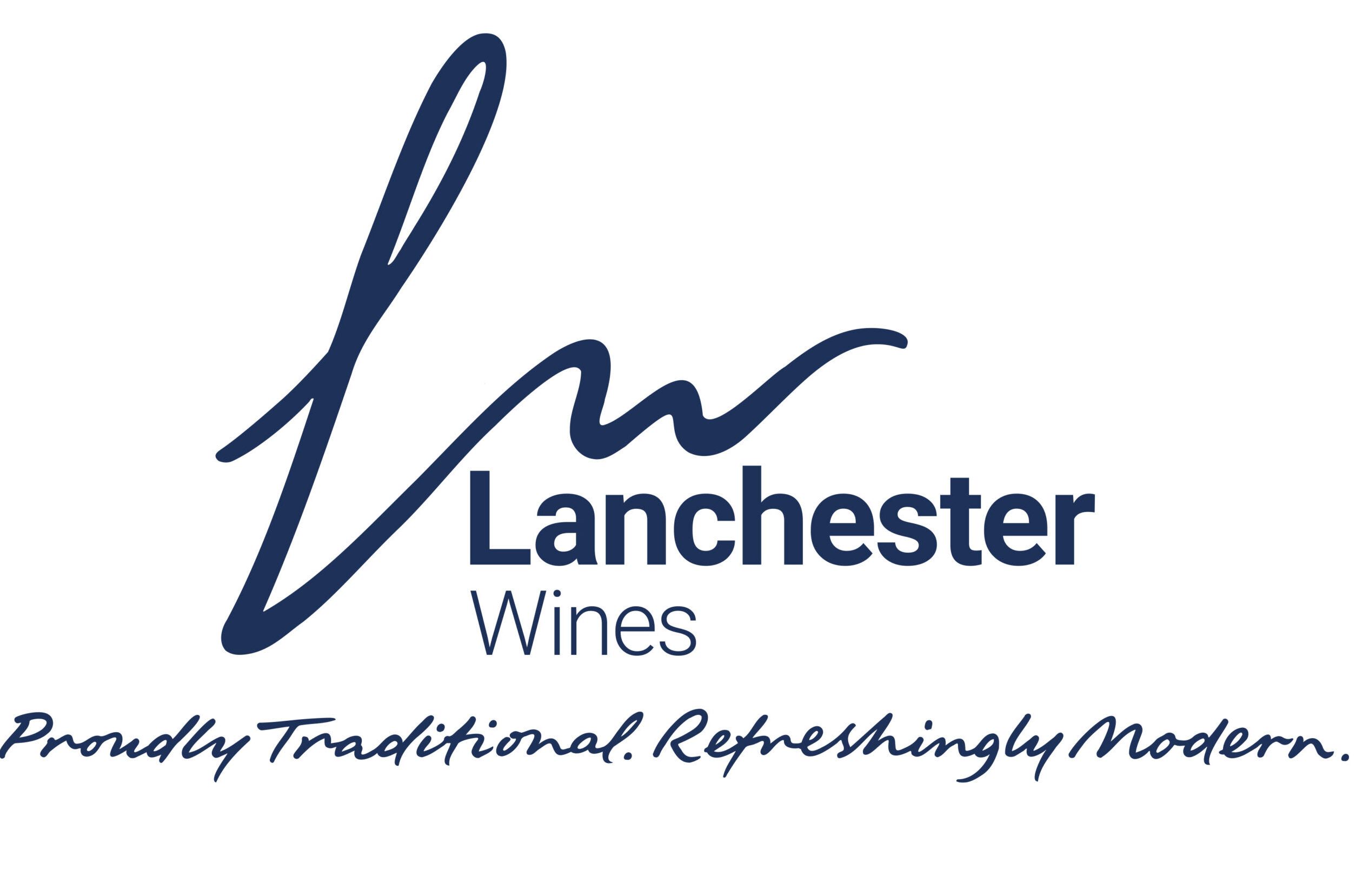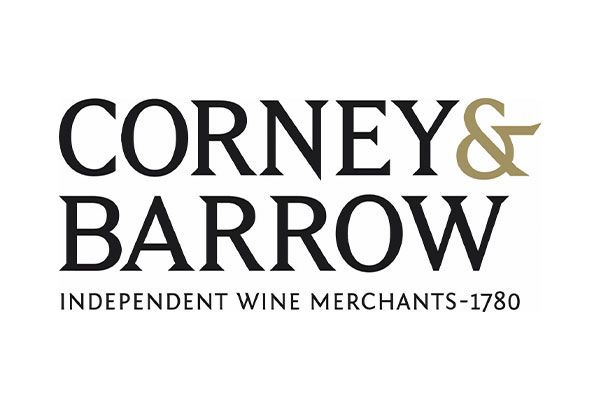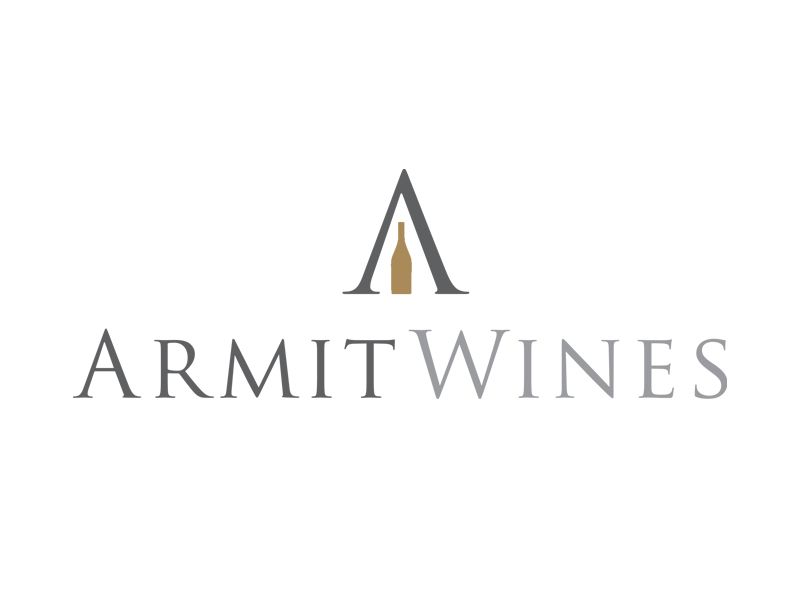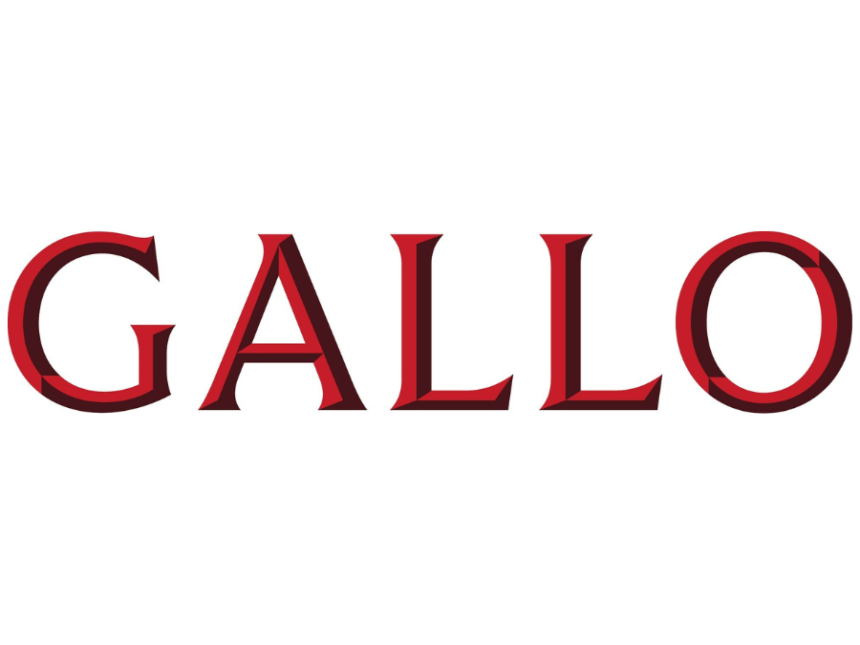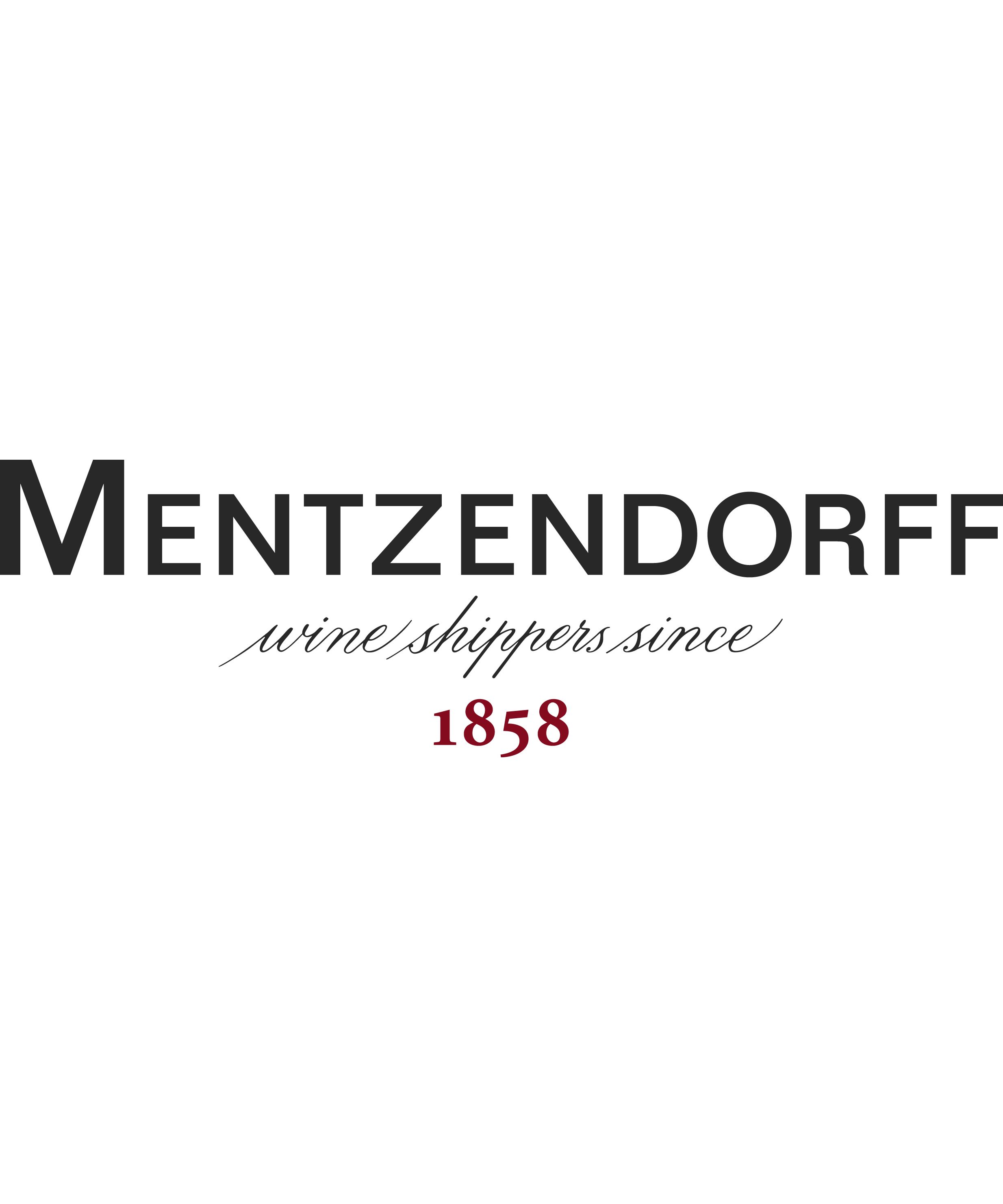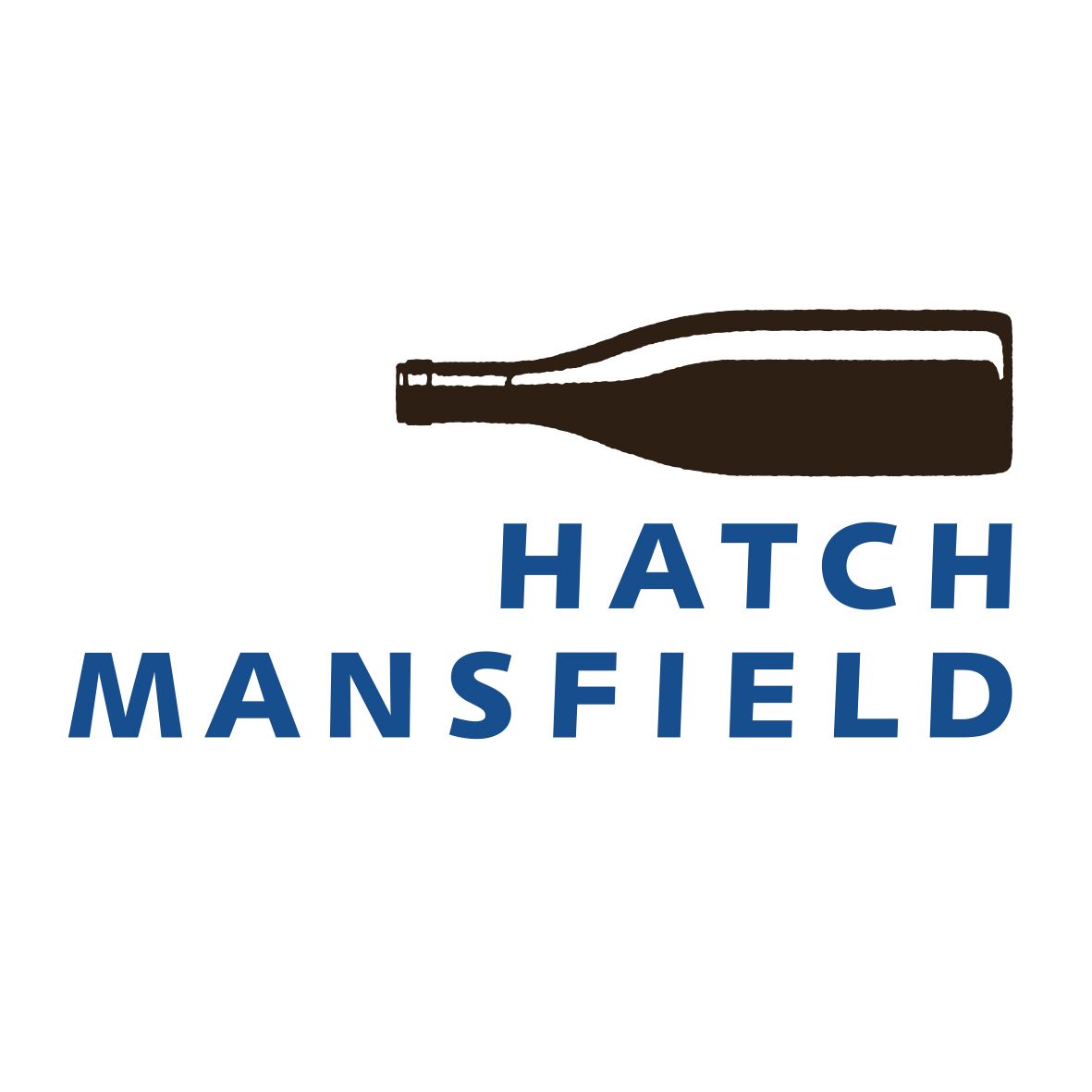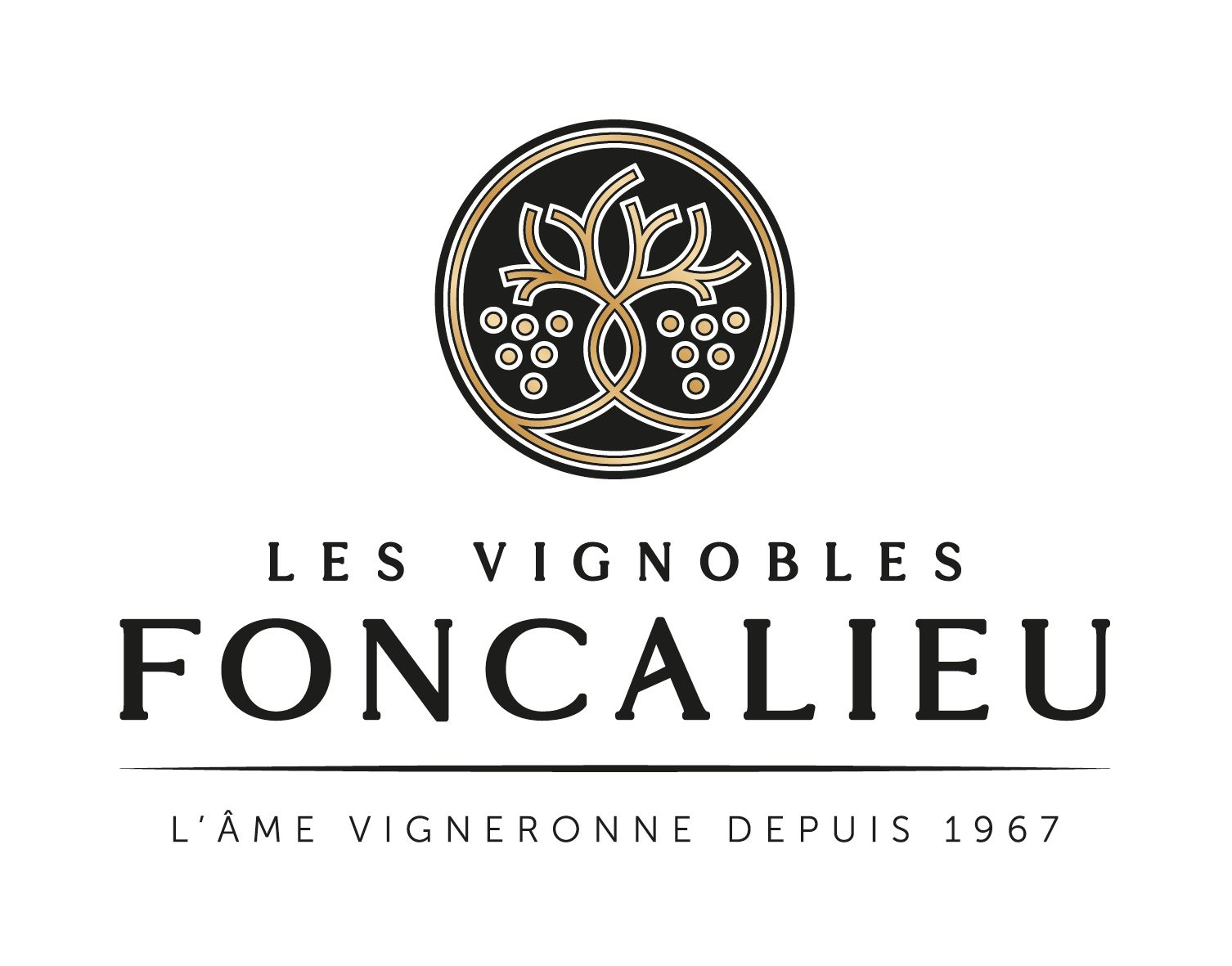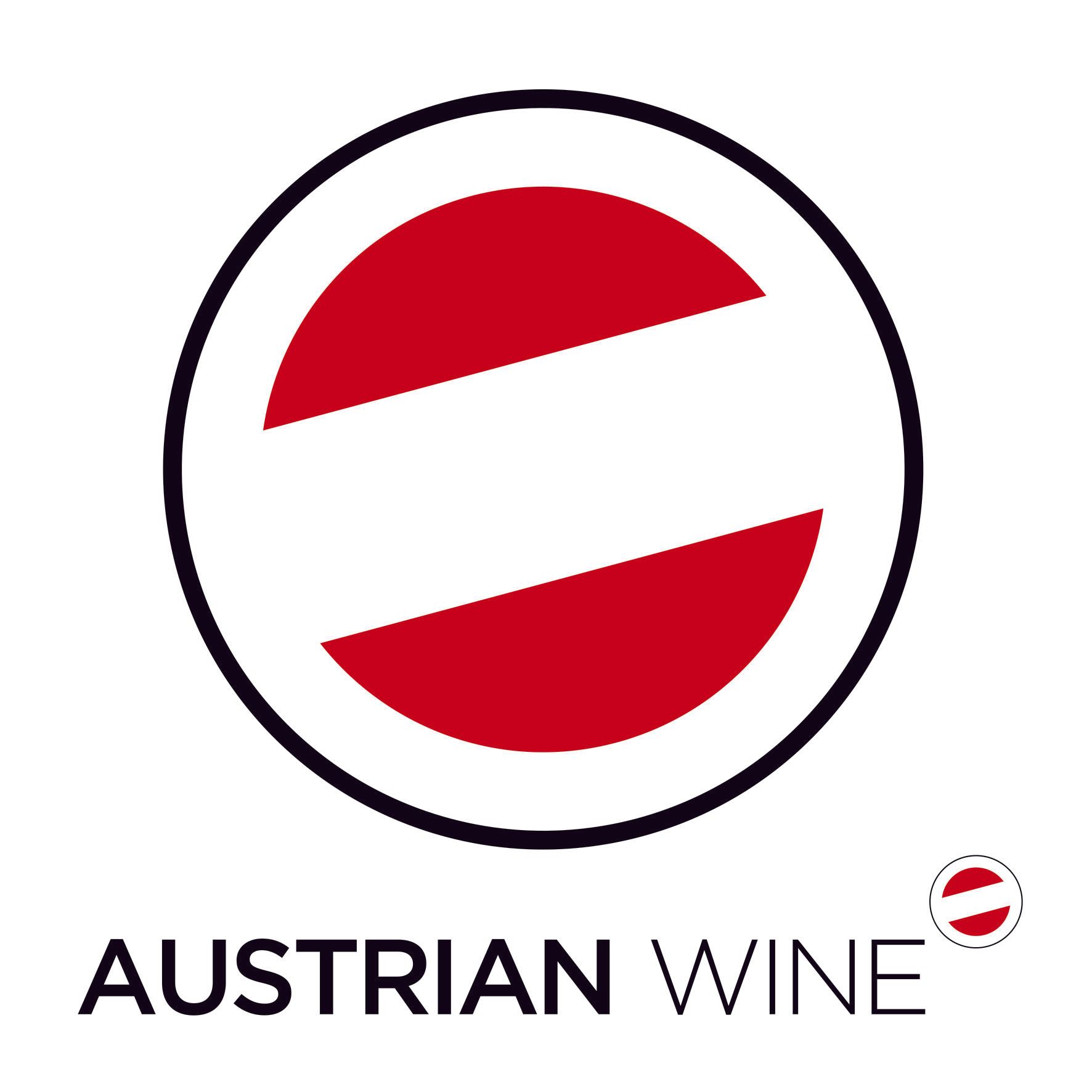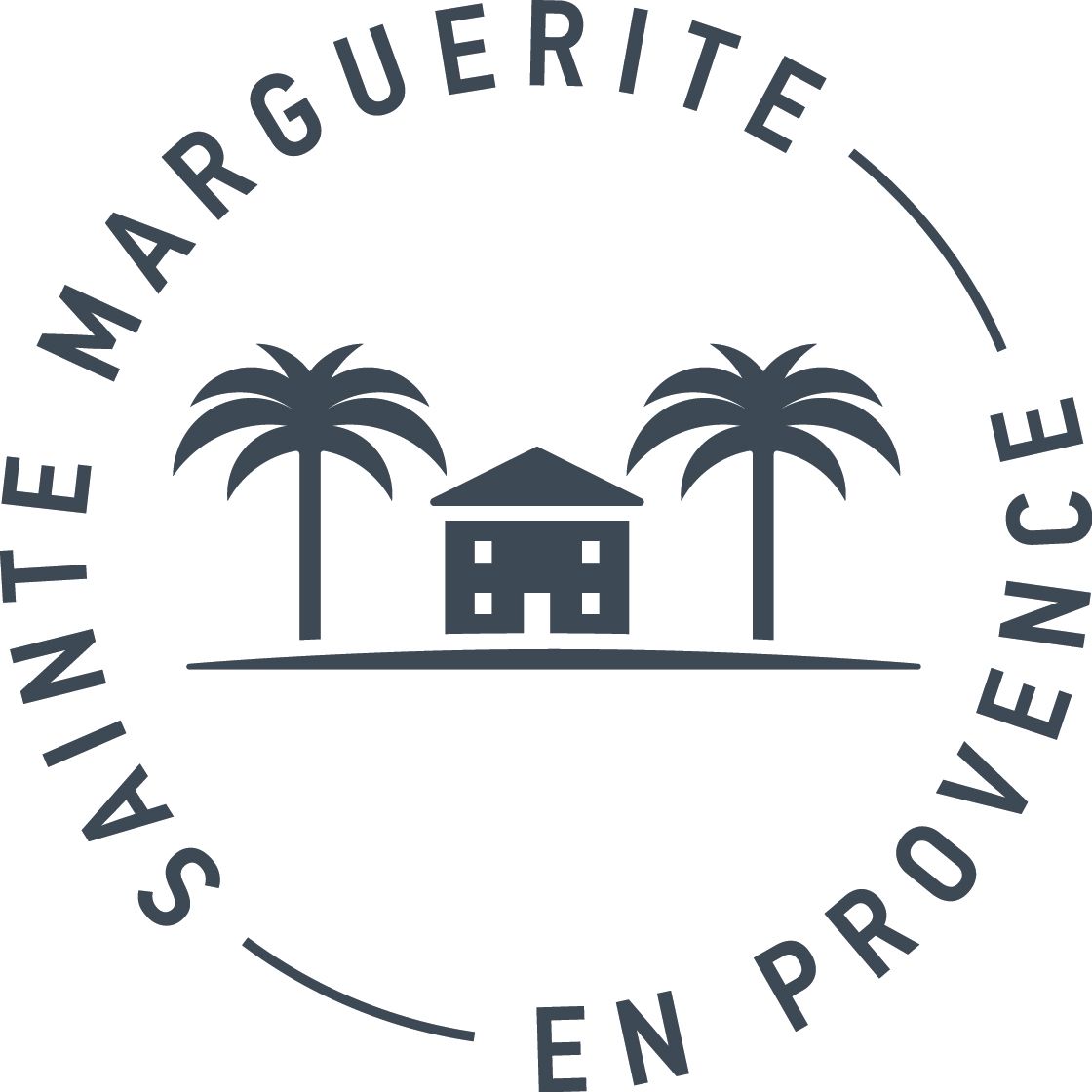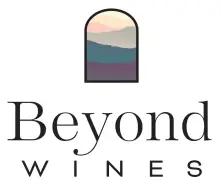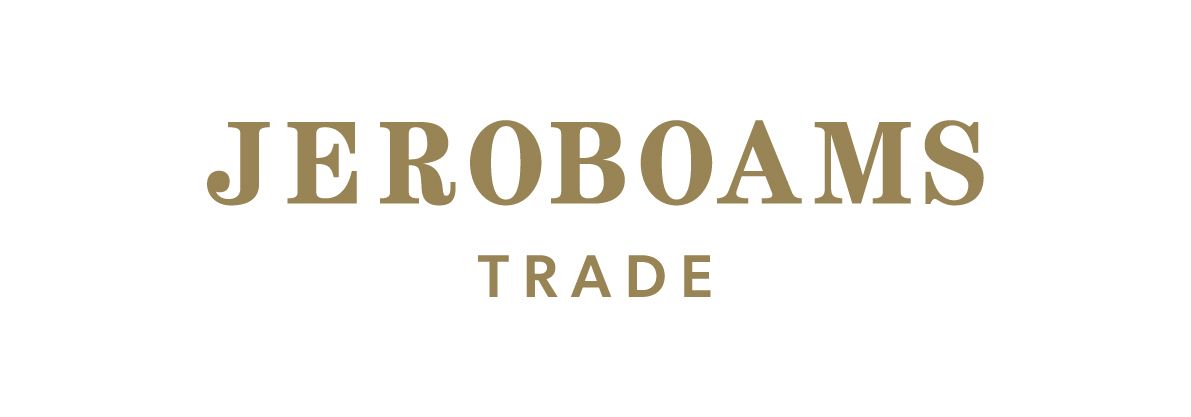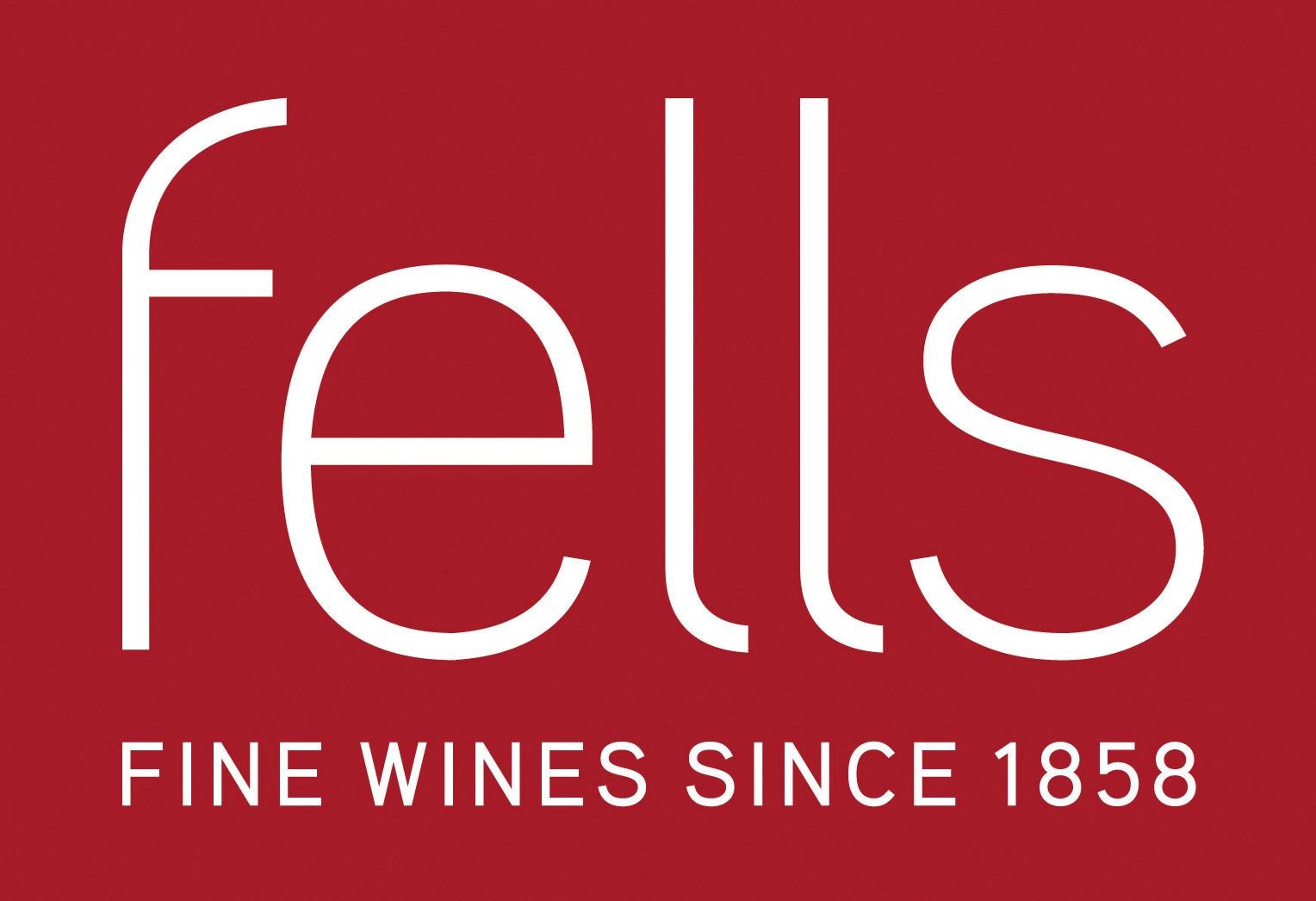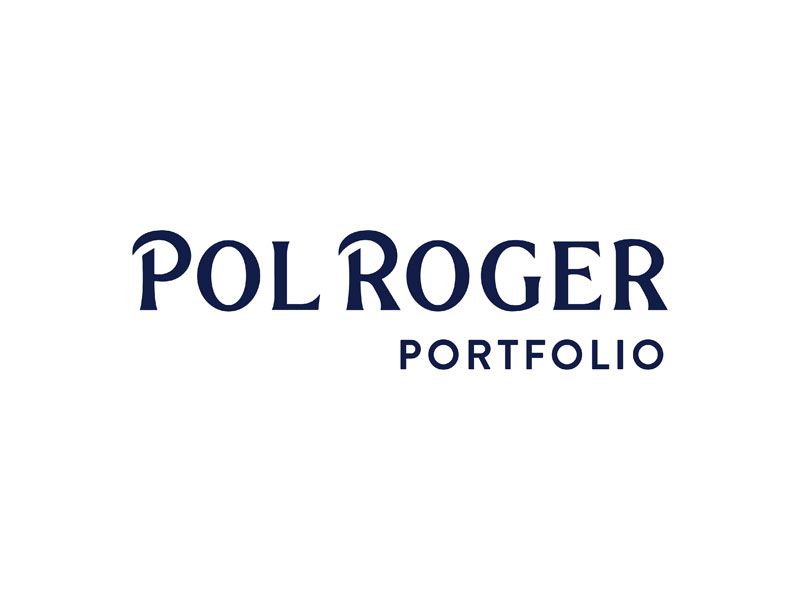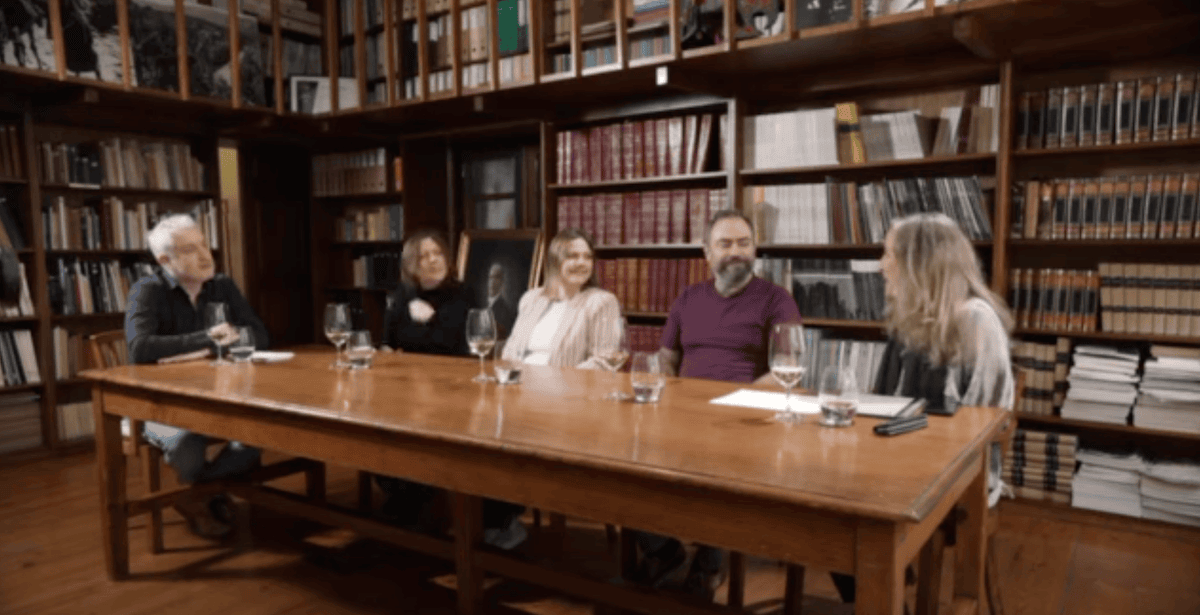In human years, 40 is a big event. We are past our 20s and 30s and 40 is the number that quietly ushers us into the ‘middle-aged’ bracket. But what about wine? As the saying goes, “you’ve aged like a fine wine.” So, what happens when one of Bolgheri’s finest – Grattamacco – turns 40?
Well, I had the immense pleasure of finding out at a special anniversary lunch and vertical tasting, hosted in London. Grattamacco’s iconic Super Tuscan (including a rare 1990 vino da tavola library treat) and its utterly transformative Vermentino were poured, swirled, sipped, and studied.
Bolgheri at a glance
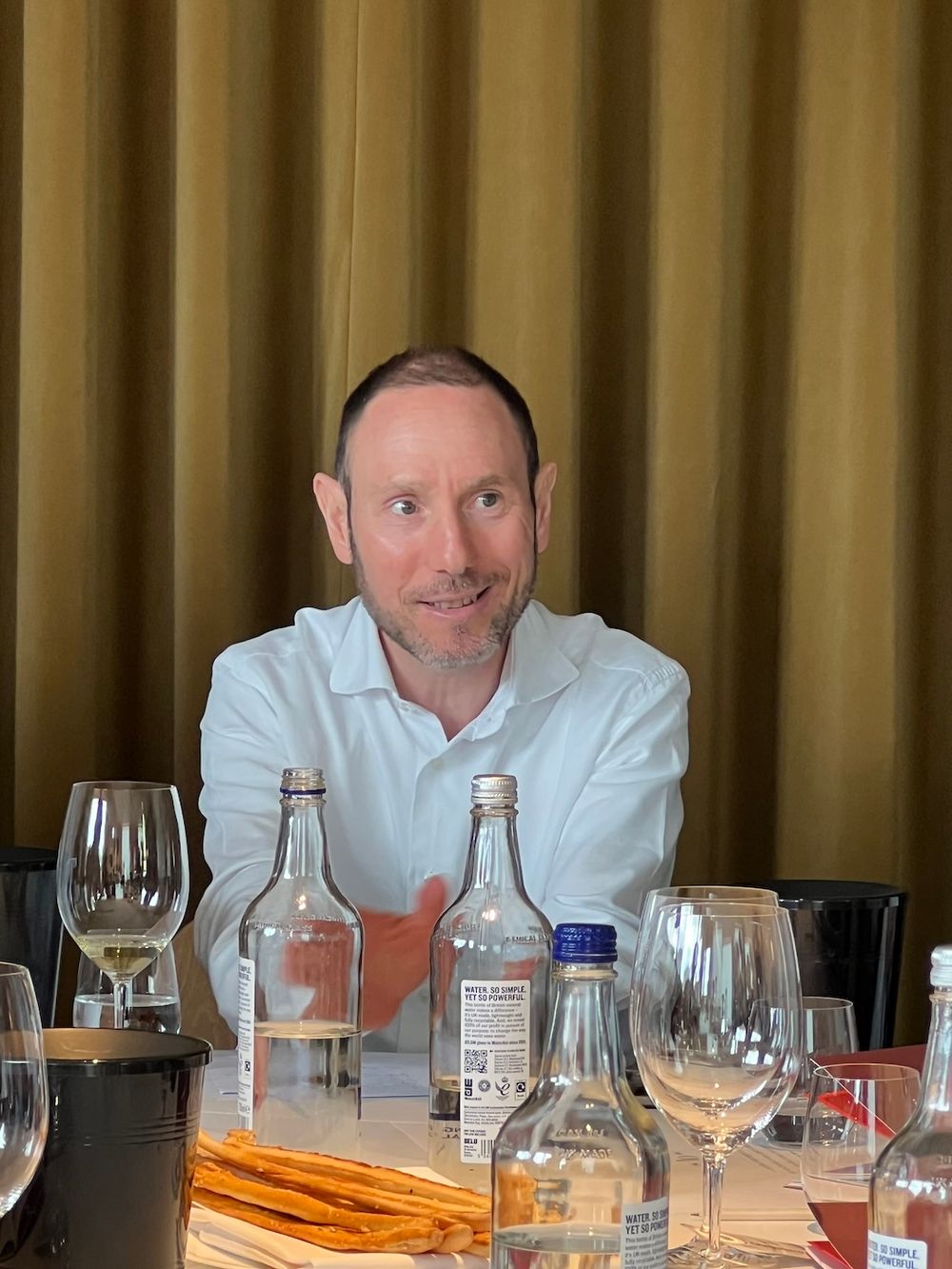
Grattamacco chief winemaker Luca Marrone talks through the wines ahead of the tasting. Cornus, London, July 2025
Grattamacco is no ordinary Bolgheri estate. Nestled at 100–200 metres above sea level, this is elevated, forest-flanked, coastal Tuscany, not rolling inland Chianti-shire. The altitude, constant sea breeze, and ancient marine soils (white clay and flysch, if we’re talking about the soil) lend the wines that unique salinity, elegance, and daring soul.
Until the 1970s, Bolgheri was barely a blip on the wine map. It was mostly known for olive oil, wild boars, and some very ordinary white wines. Sassicaia’s commercial release in 1971 (labelled as vino da tavola, or "table wine") stunned critics and disrupted the wine world.
Founded in 1977, Grattamacco was Bolgheri’s second winery and the first to vinify Bolgheri Rosso, champion Vermentino, and embrace hillside viticulture. And it's been farming organically long before the labels arrived.
In 1994, Bolgheri was granted DOC status, recognising the legitimacy of its red wines.
Once the Bolgheri DOC was established and the region began gaining international recognition, the search for exceptional vineyard sites truly took off. Casavecchia quickly stood out – a naturally elevated plot reaching up to 200 metres above sea level, with excellent exposure and well-draining soils composed of flysch and white clay. Its location, nestled in the hills between the sea and forest, provides a cooler microclimate and marked day-night temperature shifts, ideal for preserving freshness and aromatic complexity.
Recognising its potential, Grattamacco acquired the site in 2015. Rather than release it as a separate wine, they chose to incorporate Casavecchia into the main blend, adding depth, structure, and tension, highlighting the estate’s core identity, shaped by site.
The red evolution: tasting the decades
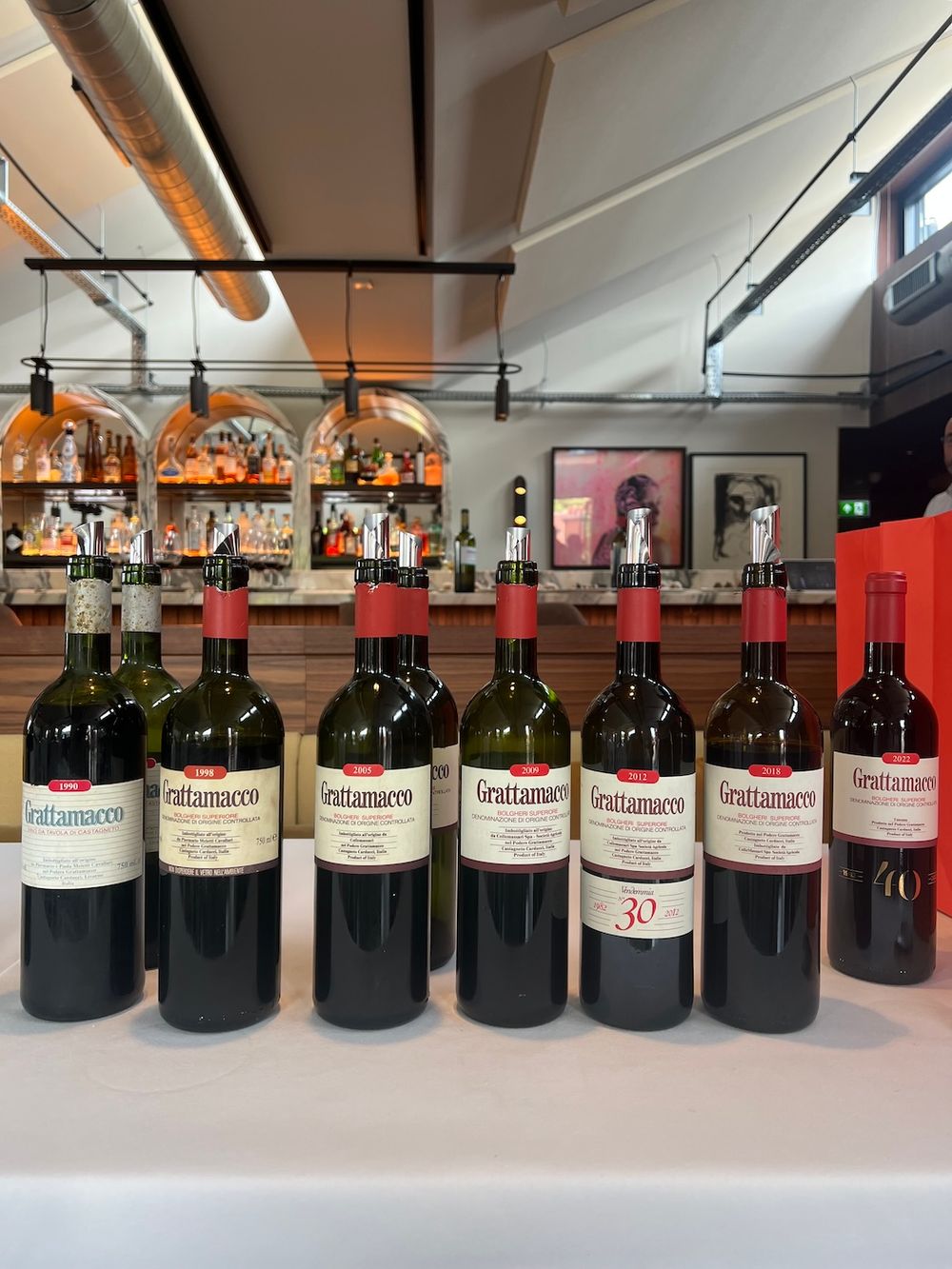
Much like humans, Grattamacco wines have gone through various stages of evolution as evidenced by the wine flights.
1990 Vino da Tavola di Castagneto
50% Cabernet Sauvignon, 50% Sangiovese, 12 months in barriques, 12,5% abv
A pure pleasure and an unique opportunity to try a limited library collection bottle. This is one of the most important vintages.
Why is it so special? Well, it’s a Super Tuscan Vino da Tavola (meaning a non-classified table wine), as the Bolgheri classification didn’t exist when the wine was made.
The nose is full of eucalyptus, mint, truffle, mushrooms, forest floor, but still with some red fruits, especially red berries. The palate is where these wines truly shine with the salinity coming through quite strongly. At 35 years old, this wine still has great acidity and feels surprisingly fresh. Lots of berries, maybe a bit of prune, but mostly red fruit. Wow!
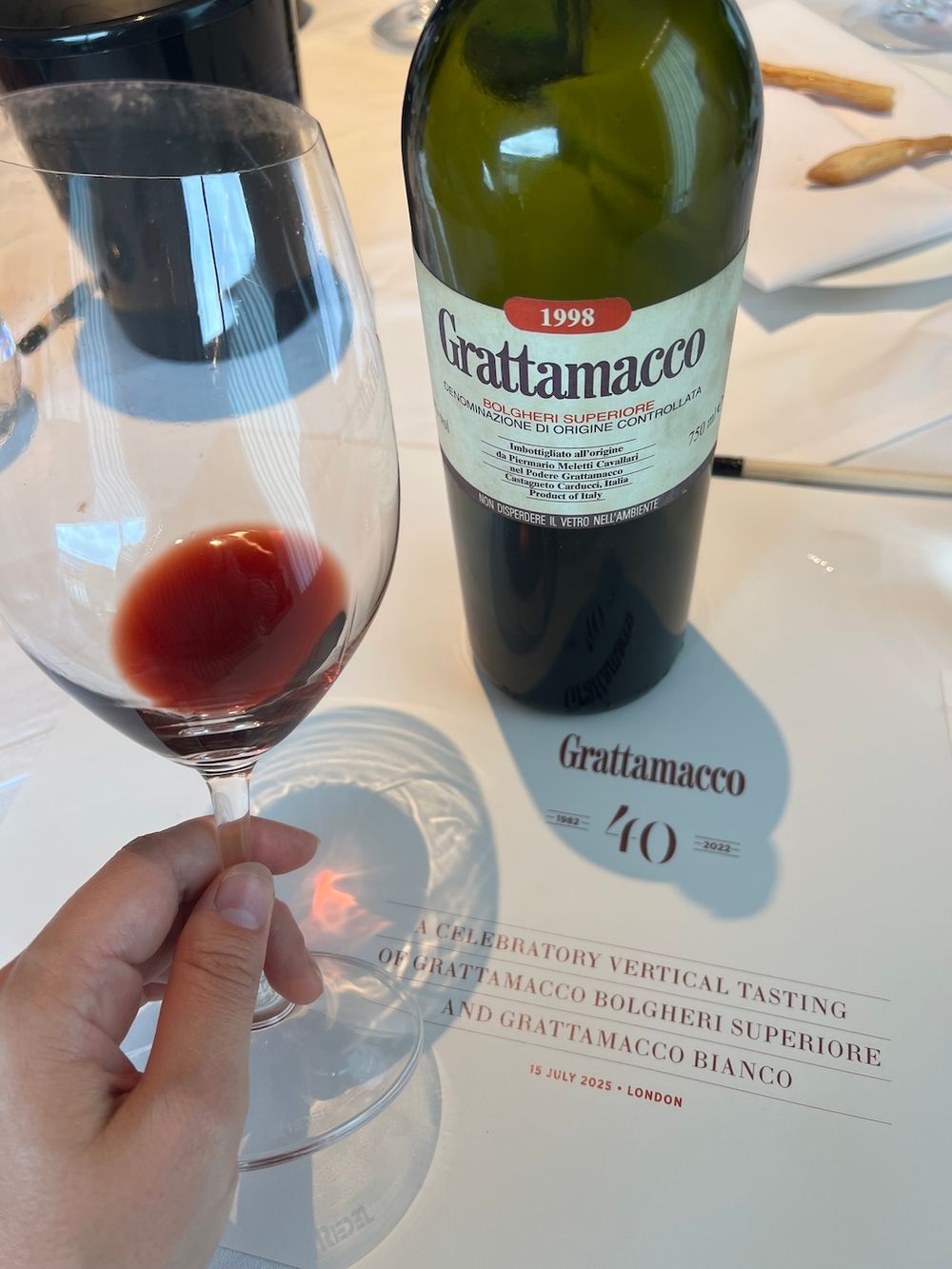
1998 Bolgheri Rosso Superiore DOC
65% Cabernet Sauvignon, 20% Merlot, 15% Sangiovese, 22 months in barriques, 13,5% abv
This is when the fun and the appellation begins. Since 1995, Grattamacco has produced wines under the Bolgheri Superiore DOC, farming organically from the outset.
Nose: mushroom, dark berry, chokeberry, a bit perfumed, dry fig, prune, and dark cherry. On the palate, this is fabulous. The acidity is skyrocketing with red cherries, blackberries and blueberries; really refreshing, with sublime tannins. A lovely wine, with that touch of salinity again, thanks to the elevation and soil composition.
2005 Bolgheri Rosso Superiore DOC
60% Cabernet Sauvignon, 30% Merlot, 10% Sangiovese, 23 months in barriques, bottled in December 2007. 13,5% abv
This is where winemaker Luca steps in; his first vintage was 2003, and 2005 was his first rainy vintage.
Nose: slightly perfumed, dark cherry, floral notes, violet perhaps? Cacao, chocolate, fig, and prune. Great acidity, pronounced salinity, red berries (red fruits in general). Tannins are sharper, like they’re still developing and shaping the wine’s character. Just like humans, this one’s merely in its 20s.
2009 Bolgheri Rosso Superiore DOC
65% Cabernet Sauvignon, 20% Merlot, 15% Sangiovese, 18 months in barriques, bottled in July 2011. 14% abv
This vintage is a darling in the library – apparently many barrels are available, making it something of an abundant year. The nose was challenging at first, a little reductive, but opened into a beautiful dark cherry. Here’s the moment to introduce Piemontesina, a maceration technique used in the Piedmont mountains. It involves pumping the fermenting must from the bottom of the tank over the cap (the layer of skins and solids that forms on top), usually in a gentler and more prolonged fashion than modern remontage. It serves to extract fine tannins, preserve aromatic purity, and ensure a more elegant structure in the final wine.
The palate, on the other hand, was one of my favourites. Bright acidity, red berries, great tannins. It will continue to develop, no doubt. Sharp, slightly more forward in its fruit expression. I quite liked it.
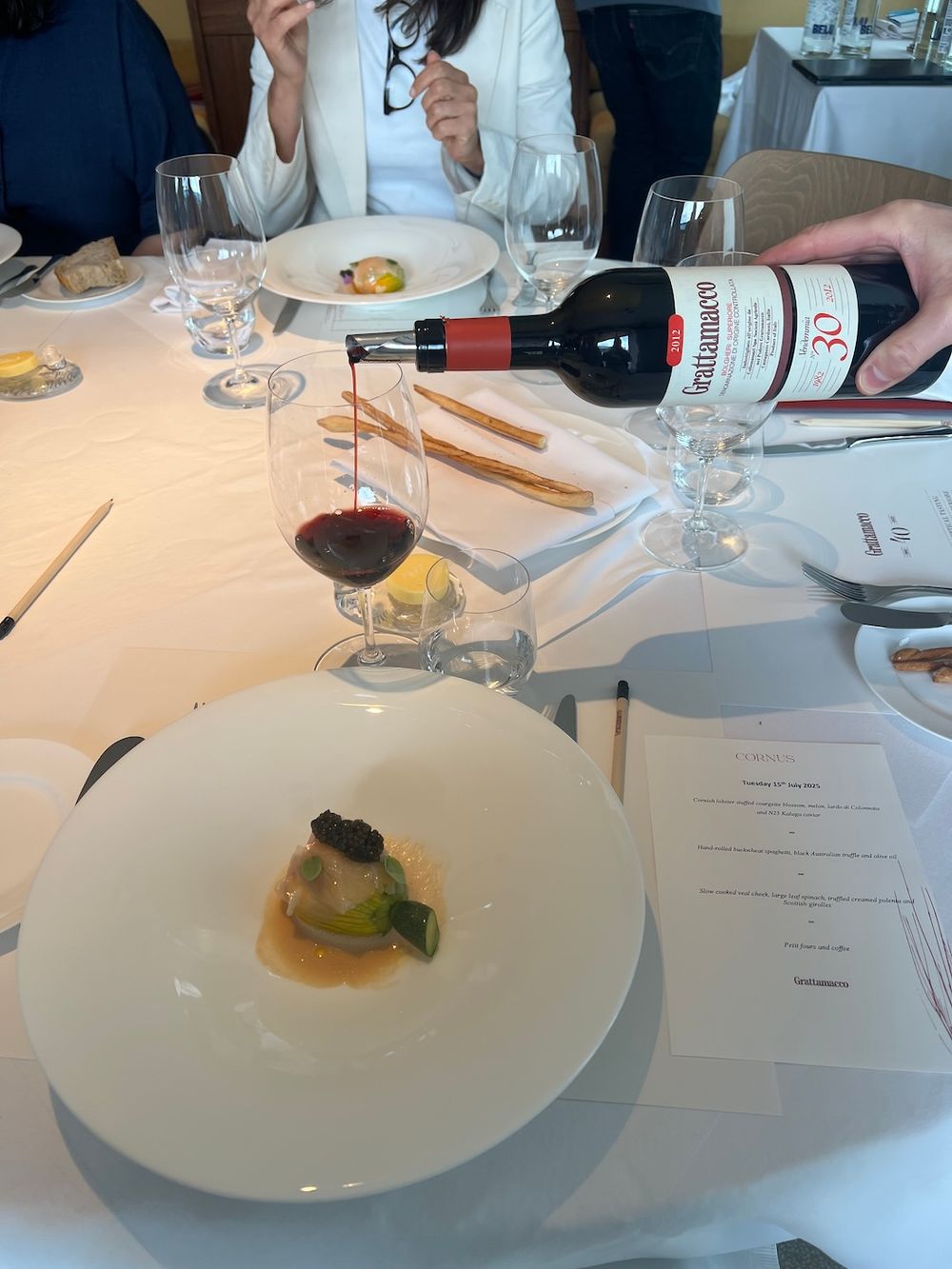
2012 Bolgheri Rosso Superiore DOC
65% Cabernet Sauvignon, 20% Merlot, 15% Sangiovese, 18 months in barriques, bottled in July 2014. 14% abv
This author’s favourite.
Nose: dark cherry, blueberry, very aromatic, violet-driven. I had quite a bit of sediment in my glass. Some blackcurrant tones and maybe a touch of eucalyptus but I was absolutely in love with the aromas.
The palate beautifully complements the nose: fantastic acidity (for a 13-year-old wine), sharp red fruits, and perfectly integrated tannins. I’d fail miserably in a blind tasting, I’d never guess this wine is 13 years old.
2018 Bolgheri Rosso Superiore DOC
65% Cabernet Sauvignon, 20% Merlot, 15% Sangiovese, 18 months in barriques, bottled in July 2020. 14,5% abv
Casavecchia is now integrated into the final Grattamacco blend, they started doing this in 2015.
Aromas: dark cherry, chocolate, ripe fruits, herbal notes (mint, sage), or what we could simply call ‘Tuscan hills’.
Very long finish (as with all of them), beautiful silky tannins, great acidity. Red berries, red cherry, redcurrant, young chokeberry.
2022 Bolgheri Rosso Superiore DOC
65% Cabernet Sauvignon, 20% Merlot, 15% Sangiovese, 18 months in barriques, bottled in August 2024. 14,5% abv
The anniversary vintage.
Very young (a baby in both human and wine years). Following my logic, this feels like The Curious Case of Benjamin Button – 40 years of experience behind the youngest wine on the table. Very fresh aromas: violet, cherry blossom instead of fruit. Quite herbal… Tuscan herbs again come to mind. Some raspberries.
I think it’s a lovely invitation to what’s to come.
Although in other parts of Bolgheri, Cabernet Franc is replacing Merlot due to climate change, Grattamacco remains committed to its blend of Cabernet Sauvignon, Merlot, and Sangiovese.
I particularly liked the story of the wild boars that go for the best grapes – the vineyard had to be fenced off. Apparently, the boars still hover near the edge of the fence. A recent salvation for the vineyard, as a lot of Sangiovese was being lost to these rather discerning grape thieves.
The whites: Vermentino, the quiet revolutionary
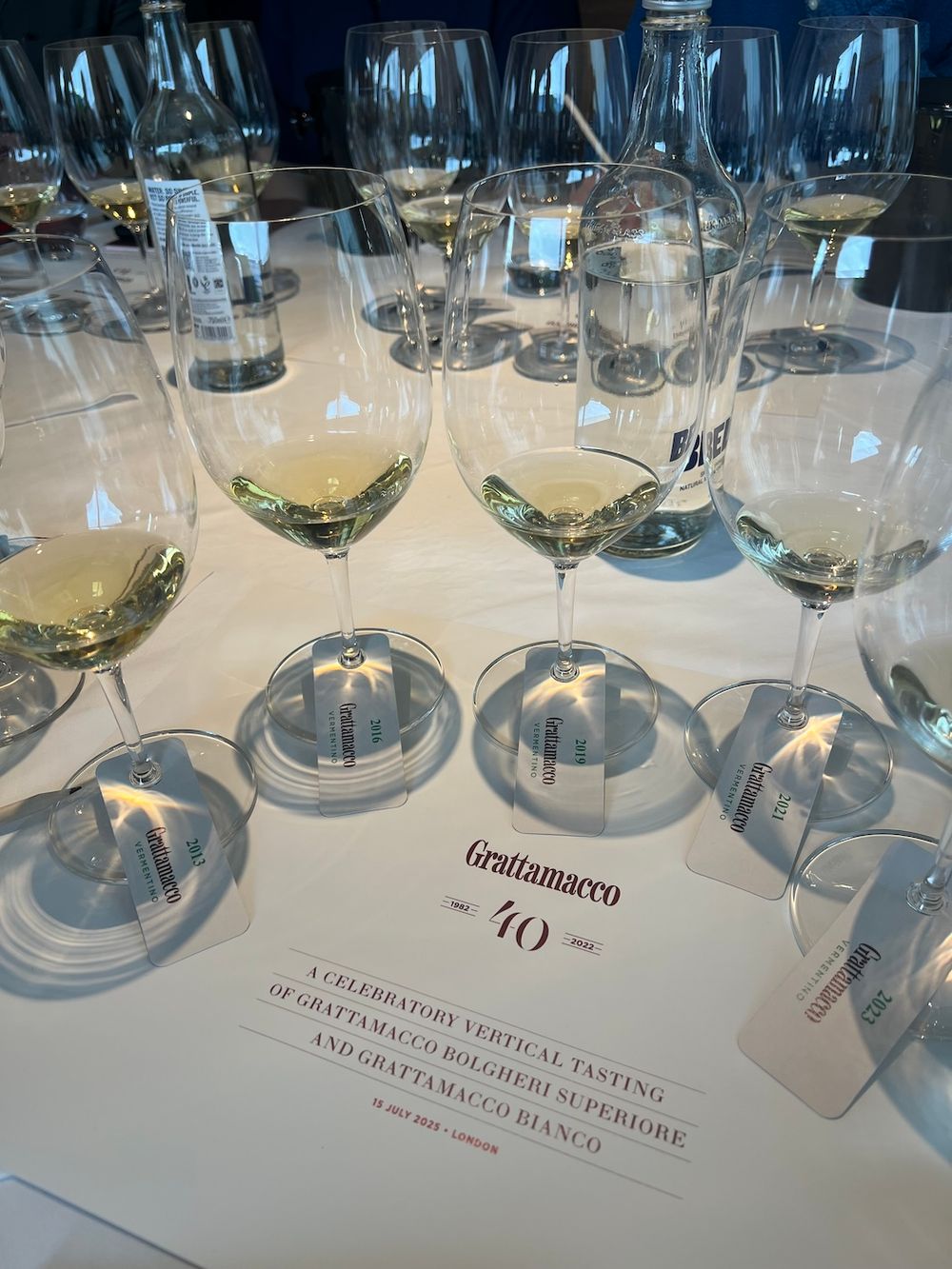
While others chased red blends, Grattamacco quietly planted Vermentino in Bolgheri back in the '80s, against the raised eyebrow of their Super Tuscan neighbours. It has since become one of the region’s most compelling whites. Grown in white clay soils rich in calcium (excellent water retention during heatwaves), these now-old vines allow the whites to speak more of island intensity than coastal breeziness.
2013 Bolgheri Vermentino DOC
100% Vermentino, 7 months in barrels, bottled in June 2014. 14% abv
Very opulent, rich, and aromatic. Quince, honeysuckle, some nuts, dry fig. Good acidity, quite tamed on the palate, flinty. 50% aged in barrique – they began using oak in the mid-90s. And the alcohol? Quite high at 14%. The goal is to produce a white with an island character, not just a coastal landscape one.
2016 Bolgheri Vermentino DOC
100% Vermentino, 8 months in barrels, bottled in May 2017. 14% abv
Aromas of freshly shelled walnuts. A little lemon, rounded with subtle oak. Two thirds fermented in oak, one third in stainless steel.
Great acidity. Green apple and quince on the palate, with fewer tertiary notes than 2013.

2019 Bolgheri Vermentino DOC
100% Vermentino, 8 months in barrels, bottled in May 2020. 14,5% abv
Due to the nature of the vintage, Luca used 50% oak again.
Nose: prune, fig, some tropical fruit. Notably bruised apple and pear. A light lemon zest note. Palate: divine. Although it's 14.5%, the alcohol is gorgeously hidden. Rich red apple, peach, ripe quince, and cream (thank you, bâtonnage). These wines have serious body.
You still get that saline edge, but more intriguingly some notes could mislead you toward Riesling. A real challenge for blind tasters.
2021 Bolgheri Vermentino DOC
100% Vermentino, 8 months in barrels, bottled in June 2022. 14% abv
The quince note disappears here. Instead, you get classic Riesling aromas: green apple and white flowers. Sky-high acidity, flinty, rounded, slightly earthy. From this vintage onwards, maceration was eliminated entirely. Very long lees ageing, right up to bottling.
2023 Bolgheri Vermentino DOC
100% Vermentino, 8 months in barrels, bottled in June 2024. 14% abv
Completely different energy. Lemon, lemon zest, white flowers.
Lovely acidity, lighter in style but still with plenty of body. For me, this and 2019 are the standout vintages. Creamy, thanks to extended lees contact.
A very decadent lunch
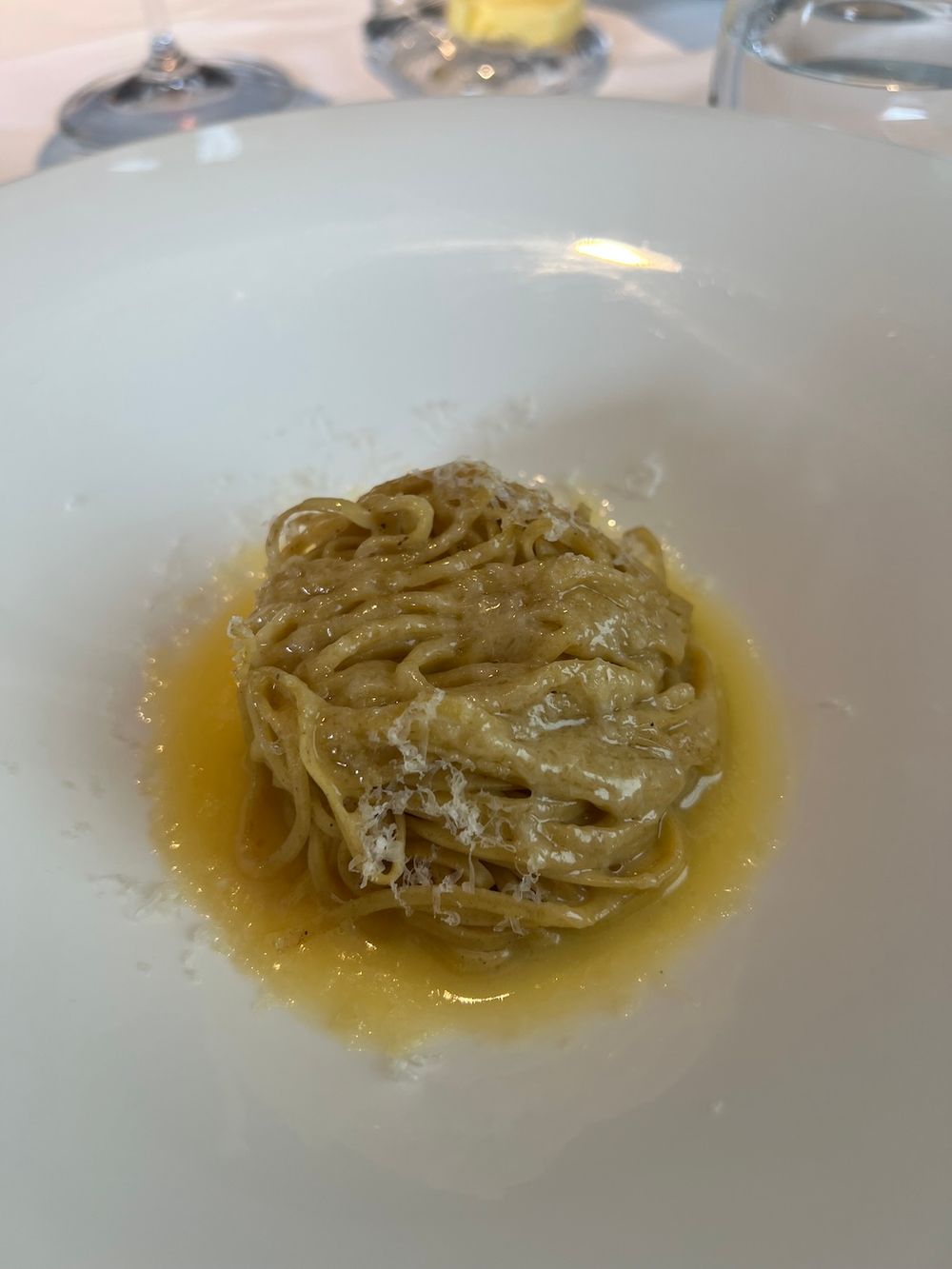
Following the pleasure of the vertical tasting, we had an opportunity to see the wines work their magic with food pairings during a delicious three-course lunch. Before we even sat down, we basked in the London sunshine on the Cornus terrace, sipping 2023 Vermentino and nibbling on finger food. The star for me was the beignets with Vermentino. A new favourite pairing, the creaminess was divine, and the wine only enhanced it!
The pairings:
Starter: Cornish lobster stuffed courgette blossom, melon, lardo di Colonnata, and N25 Kaluga caviar (yes please).
Pasta: Hand-rolled buckwheat spaghetti with Australian black truffle. (Truffle + buckwheat = heaven.)
Main: Slow-cooked veal cheek, truffled creamed polenta, Scottish girolles.
In a moment of miscalculation, I returned my Vermentino glass too early. Everyone else had two; I bravely continued with one. I enjoyed the Super Tuscans with each course and they rose to the challenge. The acidity carried the dishes effortlessly, the salinity brought harmony, and the flavours were lifted to new heights. I don’t regret it, as it was a lovely way to challenge myself to explore more untypical red wine pairings.
In conclusion: 40 and thriving
Grattamacco at 40 is not slowing down. It’s reflective, evolving, but still full of spark, a beautiful mirror of what the best wines (and people) can become. Luca has big plans for future vintages, and I must say I am thrilled to see what will come out of this middle-aged venture. Perhaps it will turn our minds around.
Here’s to another 40 years of bold Bolgheri brilliance. Cin cin.
